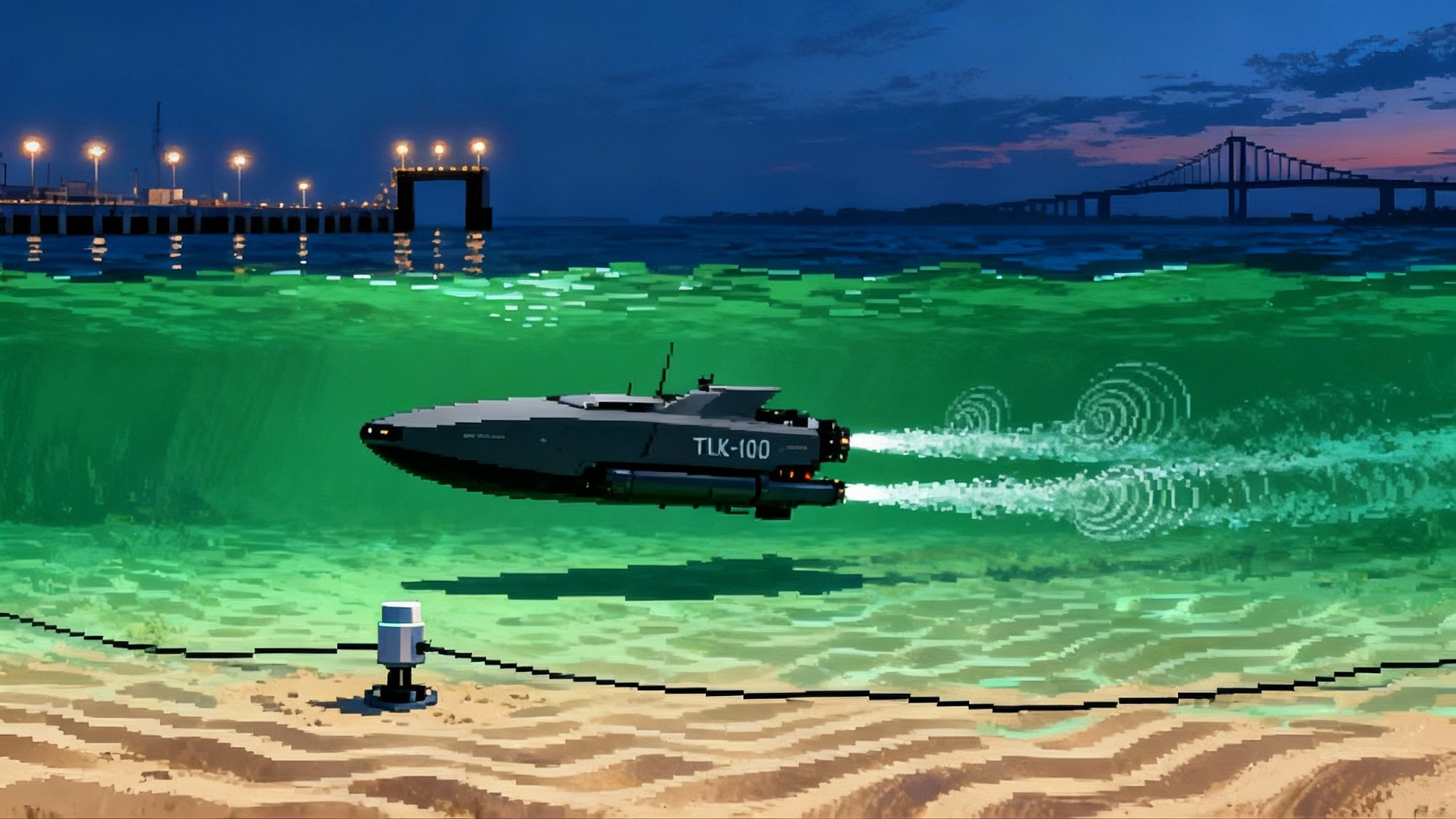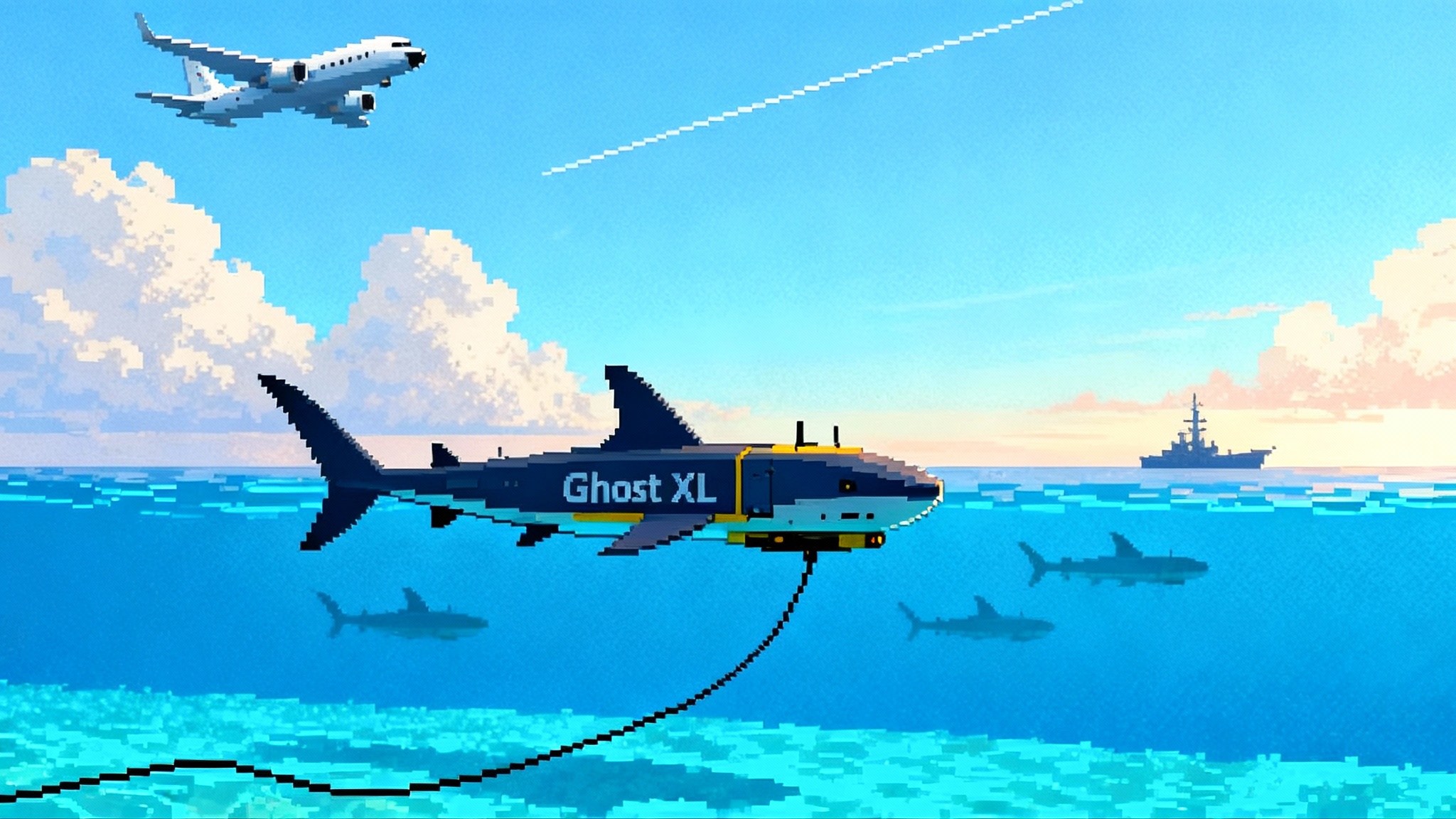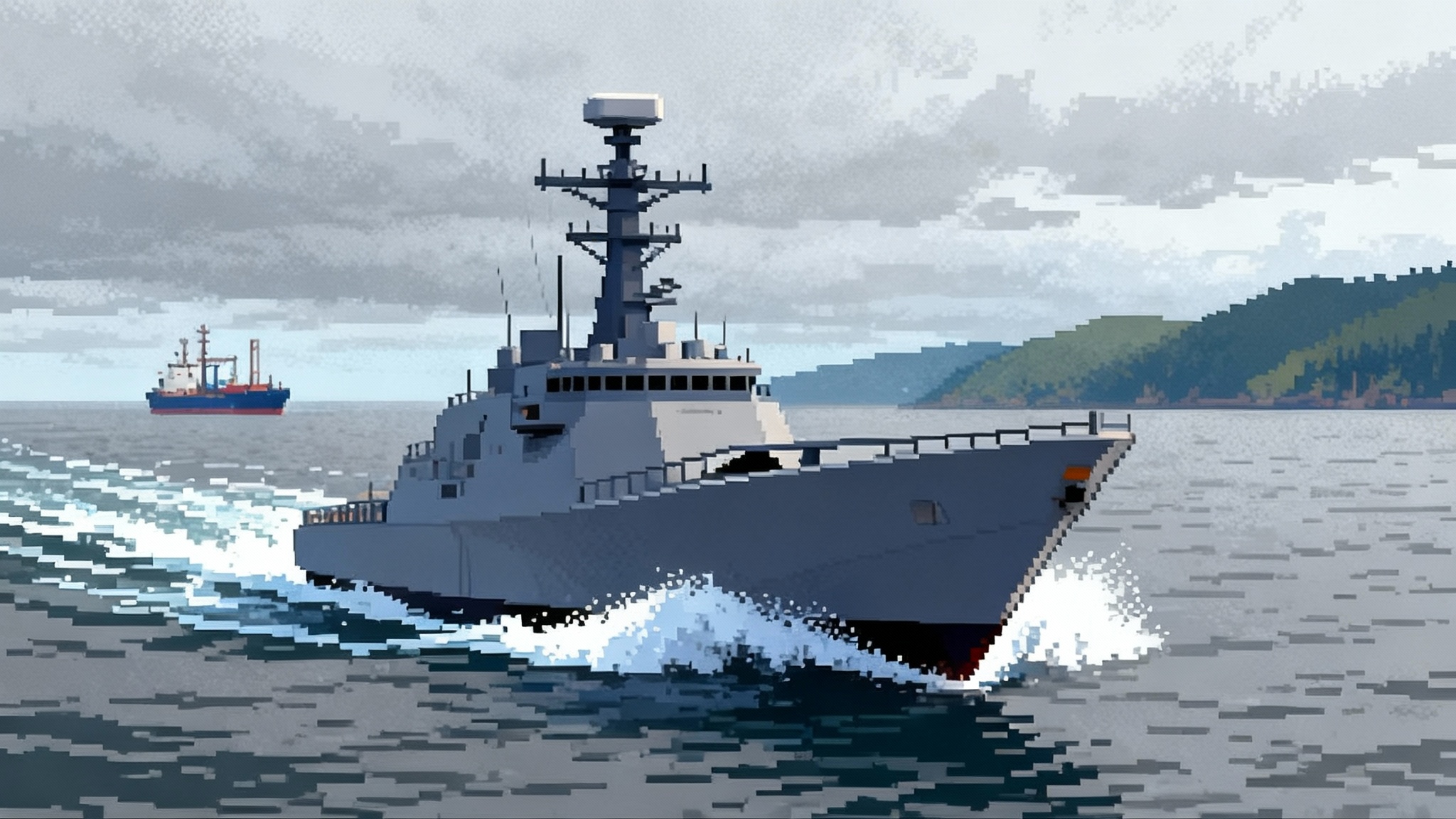TLK-1000: Ukraine's long-range UUV rewrites sea power
Unveiled in Lviv on Sept. 19, 2025, the TLK-1000 promises 2,000 km reach and a multi-ton payload. If it scales, autonomous deep-strike UUVs could upend naval strategy and trigger a global race to defend ports, bridges, cables, and fleets.

The debut that moved the sea power goalposts
In late September 2025, Ukraine pulled a new card from its rapidly evolving unmanned arsenal. At the Defense Tech Valley gathering in Lviv, engineers rolled out the largest member of the Toloka family, the TLK‑1000, and described a platform designed for long‑range autonomous strikes below the surface. According to Ukrainian reporting, the TLK‑1000 family includes variants up to roughly 12 meters with payload capacity in the multi‑ton class and a claimed reach of about 2,000 kilometers. The system’s first full public reveal came on Sept. 19, when it was publicly displayed in Lviv.
The specifics that trickled out from the show floor fit a pattern seen across Ukraine’s unmanned programs. Multiple sizes share a modular approach, with electric propulsion for stealth, a hybrid option for endurance, and a nose full of swappable sensors. Ukrainian outlets also described AI‑assisted navigation with inertial and Doppler velocity log aids, plus options for mine countermeasures and seabed mapping. None of that is exotic in the world of autonomous underwater vehicles. The scale, the mission, and the stated range are what make TLK‑1000 different. For broader context, see Ukraine’s naval drone evolution.
Why a 2,000 kilometer UUV changes the game
A long‑range autonomous underwater vehicle with a multi‑ton payload is a strategy machine. It can impose risk on high‑value fixed targets like bridges, ports, and shore facilities. It can threaten ships at anchor and submarines in protected waters. It can go after undersea cables and energy pipelines that carry data and fuel. It does all this while forcing adversaries to defend in three dimensions and at depth in littorals where traditional sensors struggle.
Range buys options. A 2,000 kilometer envelope allows launches far from enemy patrol zones, and trajectories that approach through complex coastlines. Endurance enables loiter and timing control, so an operator can plan around tides, shipping patterns, and weather that masks acoustic and magnetic signatures. Payload in the multi‑ton class opens missions beyond simple blast effects. Think segmented charges for bridge piers, encapsulated submunitions for pier clusters, or even being a mother ship for smaller armed vehicles. Whether all of these concepts reach maturity is less important than the fact that they become plausible, and planners on the other side must now assume they exist.
The cost imposition math
The strategic value of deep‑strike UUVs sits in asymmetric economics. A reinforced bridge span costs tens or hundreds of millions of dollars. A major port contains billions in cranes, pipelines, tank farms, and power links. A modern submarine is a national‑level investment. Defending every pier, channel, culvert, anchorage, and seabed cable is brutally expensive. An autonomous underwater attacker that is cheap to build, hard to find, and able to approach from non‑obvious directions flips the ledger. Even a small probability of successful sabotage forces the defender into persistent patrols, layered sensor grids, and emergency repair stockpiles.
Ukraine’s pitch leverages this arithmetic. The TLK‑1000 family is not about one spectacular strike. It is about making entire coastal regions work harder and pay more, every day. For an adversary with long coastlines and critical choke points, the cumulative cost of constant vigilance is the point.
Why traditional ASW and harbor defenses struggle
Classic anti‑submarine warfare grew up to counter manned submarines that are larger, noisier by comparison, and operate in water where sonar geometry works well. Low‑signature UUVs change that. They present several problems at once:
- Small acoustic footprint: Electric or hybrid propulsion and low speeds dramatically reduce radiated noise. A quiet target nested in littoral background clutter produces marginal signal‑to‑noise ratios for passive sonar.
- Shallow‑water physics: In coastal waters, sound bounces, bottoms clutter returns, and thermoclines bend acoustic paths. Hull‑mounted sonars and towed arrays lose much of their range advantage in these conditions.
- Harbor complexity: Piers, pilings, breakwaters, and dredged channels create dead zones for active sonar, while constant vessel traffic generates a dense field of echoes. Visual or infrared sensors are limited by turbidity and darkness.
- Autonomous tactics: UUVs can plan to hug bottoms, follow known shipping routes to blend in, use quiet windows between ferries, or stop and sit to wait for the right tide or patrol gap. The time scale favors the attacker. For more background, see littoral ASW challenges.
None of this means defenses are helpless. It means old playbooks do not scale, and navies must rethink how to sense and intercept small, slow, quiet things underwater near shore.
The new countermeasures stack
The most promising responses mix more sensors, more autonomy, and more mass into the watery edge of critical infrastructure.
- Seabed sensor grids: Permanently emplaced acoustic, pressure, and magnetic nodes build a picture of the seabed over time, so anomalies stand out. After high‑profile pipeline and cable incidents, NATO and European partners have invested in protecting critical undersea infrastructure. Expect expansion of fixed arrays near ports, energy hubs, and choke points.
- AI‑assisted acoustic processing: Machine learning is moving from labs into sonars to classify hard‑to‑separate contacts and handle clutter. The key is not just better algorithms but better training data from the exact waters a grid protects, plus rigorous testing to reduce false positives that drive operator overload.
- Multi‑static and distributed sensing: Rather than a single ship pinging, multiple small sources and receivers, including unmanned surface and subsurface platforms, trade pings and echoes to triangulate quiet objects. Distributed buoys and USVs extend coverage cheaply.
- UUV interceptors: Once you can cue a suspected track, you need effectors. These range from small autonomous interceptors with shaped charges, to encapsulated torpedo mines triggered by specific acoustic signatures, to rapidly deployed net systems across channels. None is perfect everywhere, which is why defenders will mix them depending on seabed, currents, and traffic density.
- Smart mines and barriers: Controlled minefields and smart barriers inside harbors can be tuned to ignore known traffic while reacting to objects with the wrong acoustic, magnetic, or size profile. The trick is tight rules and positive control so that safety and law are not compromised.
- Hardening and redundancy: You cannot intercept everything. Extra armor on bridge piers, sacrificial fenders at key berths, double‑walled cable landings, and redundant routes reduce the payoff for the attacker. For implementation ideas, see seabed infrastructure protection.
Each layer helps, but only an integrated architecture reduces risk to acceptable levels. That requires navies to treat port and energy protection as a continuous campaign rather than a periodic patrol.
Scenarios that keep planners awake
- Bridges and causeways: A deep‑strike UUV can approach from sea and work its way into a river mouth or strait, timing its run to avoid patrols. A multi‑ton payload against a critical pier can temporarily drop a span, which has operational and political effects disproportionate to repair costs.
- Ports and shipyards: Piers, fuel lines, and dry dock pumps are fragile. A UUV that infiltrates a busy commercial harbor can target an enabler like a power substation that shuts down cranes for days. Even failed attempts raise insurance premiums and slow logistics.
- Submarines at anchor: Submarine pens and protected anchorages are designed around traditional threats. An autonomous underwater attacker that can loiter and strike at a tender, a pier service line, or a hull while the boat is alongside introduces unacceptable risk to maintenance windows.
- Undersea cables and pipelines: These are attractive because they are hard to patrol end to end. Attacks need not sever; damaging repeaters or valve stations can have long effects. Repair crews operate on the attacker’s timeline, not the defender’s schedule.
The global ripple effects
The Lviv debut accelerated a race that was already underway. Different navies will respond through the lens of their geography and budgets.
- NATO navies: Expect faster investment in seabed awareness, port protection, and autonomous interceptors, along with modular kits that can be craned onto any patrol ship. Exercises will grow in the Baltic, North Sea, and Mediterranean to rehearse protection of cables, pipelines, and LNG terminals. Procurement momentum behind extra‑large UUVs for surveillance will now include strike options, even if only to keep deterrence credible.
- Russia: Moscow already embraces unmanned maritime systems for reconnaissance and sabotage. A Ukrainian deep‑strike UUV capability forces more resources into Black Sea and Arctic base protection, with added patrol burden on the Northern and Pacific Fleets. Given Russia’s reliance on long energy corridors, expect more seabed sensors and controlled minefields around key approaches.
- Indo‑Pacific navies: Long littorals and island chains make autonomous underwater strike both tempting and worrying. Japan and Australia will likely accelerate UUV programs focused on sea denial around straits and chokepoints. China, already fielding large UUVs and seabed systems, will expand harbor protection and counter‑UUV forces around Hainan and major ports. Taiwan will continue to explore unmanned undersea systems that complicate an amphibious assault and threaten staging areas across the Strait.
Proliferation, exports, and the gray zones of law
If Ukraine can produce TLK‑1000 variants at scale, the export market will come knocking. Even if Kyiv restricts sales, the design ideas will spread. Other companies and states will produce lookalikes, and smaller actors will assemble cruder versions from commercial components. The barriers are lower underwater than in the air, because speed and data links matter less than stealth and endurance.
Rules of engagement will lag. Underwater attackers that threaten civilian infrastructure create hard questions. Who decides a contact is hostile in a busy harbor. Which sensors are enough to attribute an attack to a state rather than a proxy. When is a preemptive strike on a suspicious UUV legal if it is still in international waters. The conventions that govern mine warfare, neutral waters, and critical infrastructure protection were not written for autonomous strike craft creeping along the seabed. Expect new bilateral agreements around ports, and more emergency hotlines, as navies try to avoid spirals from false alarms.
What would make TLK‑1000 a true deep‑strike system
Three technical pieces will determine whether TLK‑1000 becomes a watershed or an impressive prototype.
- Navigation and autonomy: Long‑range underwater navigation requires more than GNSS at periscope depth. Robust inertial systems with Doppler updates, terrain‑aided fixes, and careful surfacing schedules are essential. Autonomy must handle currents, bottom avoidance, and collision rules as traffic patterns shift.
- Survivability in the last mile: The most dangerous stretch is the harbor approach. Quiet propulsion, low‑contrast shaping, and smart route planning must be paired with real‑time sensing to slip past nets, patrols, and temporary barriers. A vehicle that can pause and wait for the right window is worth more than one that arrives fast.
- Warhead integration and fuzing: Multi‑ton payloads are only useful if they deliver precise effects against concrete, steel, or seabed targets without premature detonation. Modular charges and reliable fuzes that function after long transits and at depth are non‑trivial engineering.
The bottom line
Ukraine’s TLK‑1000 did not create the idea of autonomous underwater strike. It made the concept concrete, photogenic, and politically salient. If even part of the claimed performance proves out, navies will have to defend more infrastructure in more places with more sensors and more autonomous effectors than they planned a year ago. The cost curve points to a world where cheap, quiet, and patient machines pressure expensive, noisy, and busy targets in the shadows of the seabed.
That is the dawn of autonomous deep‑strike UUVs. It will not be a single weapon, a single navy, or a single theater. It will be a sustained, global shift in how maritime power is projected and protected, from bridges and ports to the cables that knit economies together under the waves.








